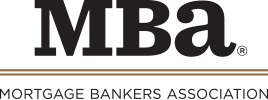
Consumer Confidence Dips But Remains Robust
The Conference Board, New York, said its Consumer Confidence Index fell in April, but remained near the 12-year high reached in March.
The Index stands at 120.3, down from 124.9 in March. The Present Situation Index decreased from 143.9 to 140.6 and the Expectations Index declined from 112.3 last month to 106.7.
“Consumer confidence declined in April after increasing sharply over the past two months, but still remains at strong levels,” said Lynn Franco, Director of Economic Indicators with The Conference Board. “Consumers assessed current business conditions and, to a lesser extent, the labor market less favorably than in March. Looking ahead, consumers were somewhat less optimistic about the short-term outlook for business conditions, employment and income prospects. Despite April’s decline, consumers remain confident that the economy will continue to expand in the months ahead.”
“The pullback was a bit more than expected and followed a downward revision to the March reading,” said Mark Vitner, senior economist with Wells Fargo Securities, Charlotte, N.C. “Nevertheless, the index still stands at its second highest reading of the expansion and above the highs of the past expansion.”
Vitner said economists expected some “giveback” in consumer confidence following trouble late last month surrounding proposed revisions to the Affordable Care Act and the signal it sent that it may be much tougher for Washington to pass new policies than what consumers and the market expected.
“Although readings of consumer confidence have been particularly disjointed from households spending in recent months, the index remains at a level supportive of a pickup in spending in the second quarter,” Vitner said. “Real personal consumption spending in the first quarter looks to have been held down by a number of one-off factors, including depressed utilities spending from relatively warm winter weather, but, with the labor market continuing to improve, we expect a rebound in the second quarter.”
The report said consumers’ assessment of current conditions eased in April. Those saying business conditions are “good” declined from 32.4 percent to 30.2 percent, while those saying business conditions are “bad” increased slightly, from 13.1 percent to 13.8 percent. Consumers’ assessment of the labor market was moderately less favorable. Those stating jobs are “plentiful” declined from 31.8 percent to 30.8 percent, while those claiming jobs are “hard to get” was virtually unchanged at 19.1 percent.
Consumers were less optimistic about the short-term outlook in April. The percentage of consumers expecting business conditions to improve over the next six months decreased from 26.9 percent to 24.8 percent, while those expecting business conditions to worsen rose from 8.5 percent to 10.9 percent.
Consumers’ outlook for the labor market was also less upbeat. The proportion expecting more jobs in the months ahead declined from 23.8 percent to 23.0 percent, while those anticipating fewer jobs increased from 12.7 percent to 13.1 percent. The percentage of consumers expecting their incomes to increase declined from 22.5 percent to 19.3 percent, while the proportion expecting a decrease held steady at 7.5 percent.
